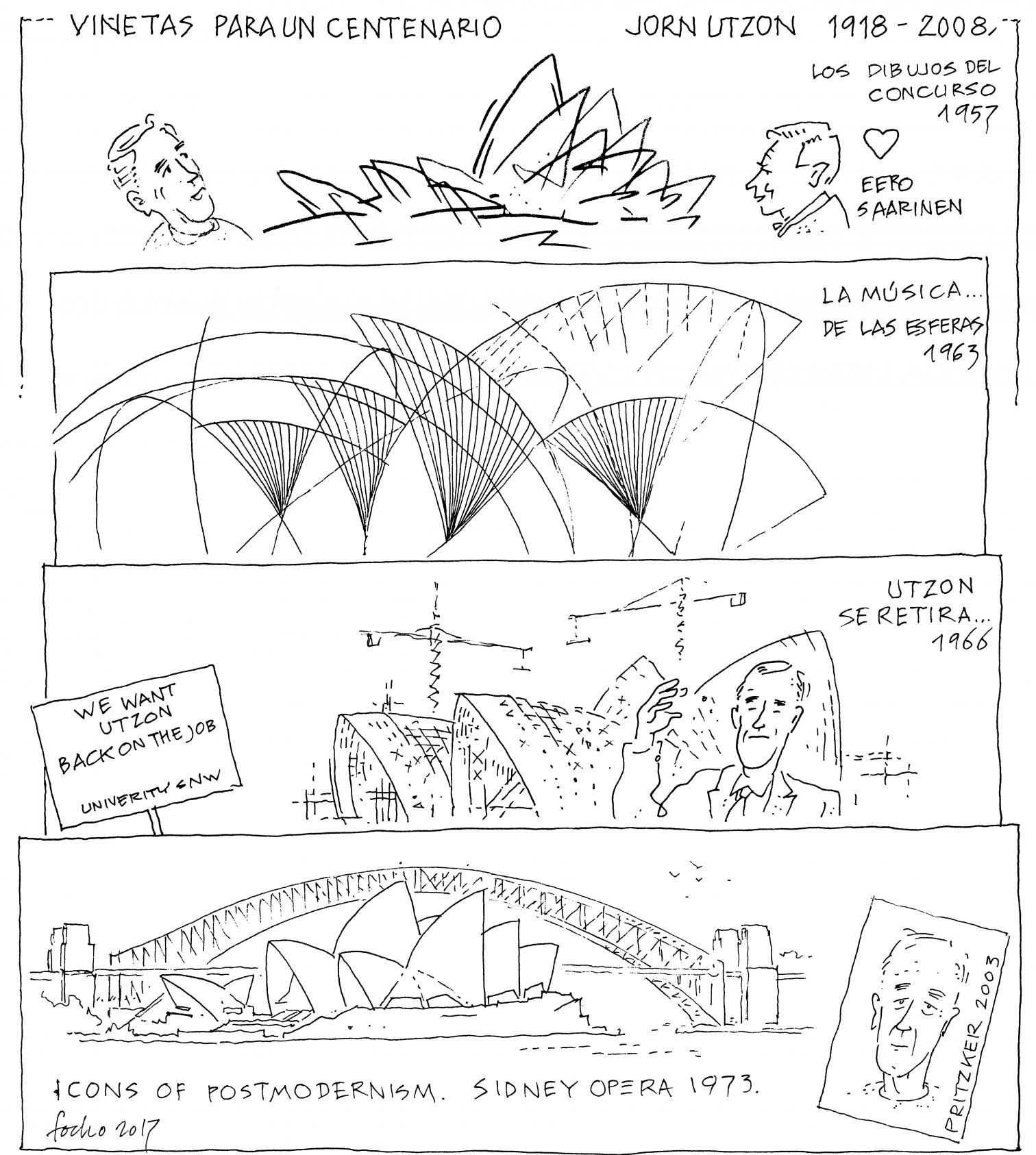
A hundred years have passed since the birth of Jørn Utzon, the Danish visionary who with one of the most iconic buildings of the 20th century was a pioneer in giving form to the society of the spectacle. The Sydney Opera House, nevertheless, does not suffice to synthesize the work of an architect who was eclectic in form, but coherent in his approaches. The son of a naval engineer, he attended the Royal Danish Academy of Fine Arts, and following his graduation in 1942 he began to work in the Stockholm office of Erik Gunnar Asplund. It was during this time, under his first mentor, that he first took an interest in the work of Frank Lloyd Wright, whose curious and unclassifiable spirit he would adopt when he set up his own practice in Copenhagen, in the wake of World War II and the German Occupation of Denmark.
In 1957, at 38 years of age, a competition jury on which the Finnish Eero Saarinen sat chose Utzon’s proposal for the SOH, and for a decade the Dane was at the forefront of the construction of the light sails that would mark his career. In 1966, however, a change of government led to a series of disagreements between the architect and the authorities, who questioned his decision to extend the ‘music of the spheres’ to the building’s interior. Utzon gave up the project and left the country, never to return. Completed by others, the opera house was inaugurated in 1973 in the absence of its author. Hence, the Pritzer Prize that was bestowed on him three decades later was an act of justice: the architectural discipline’s reconciliation with the Australian emblem.






